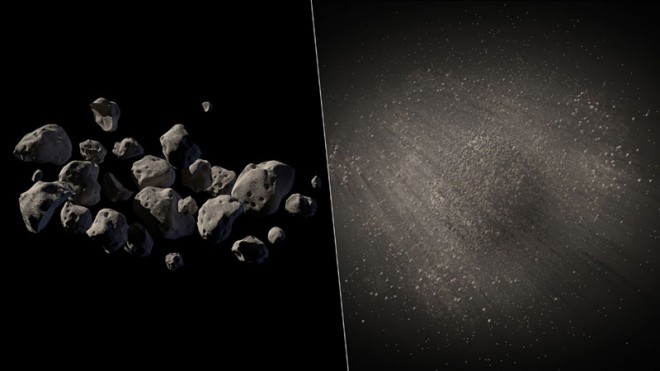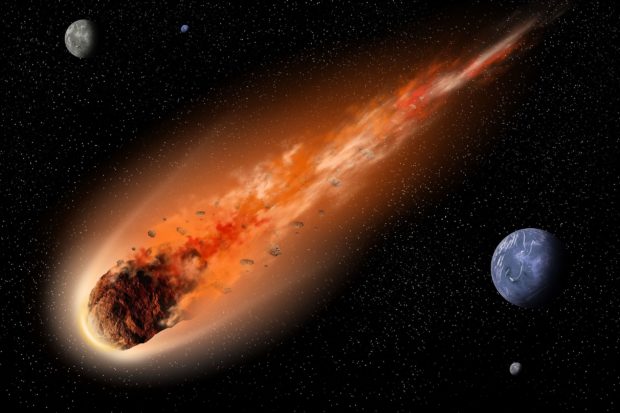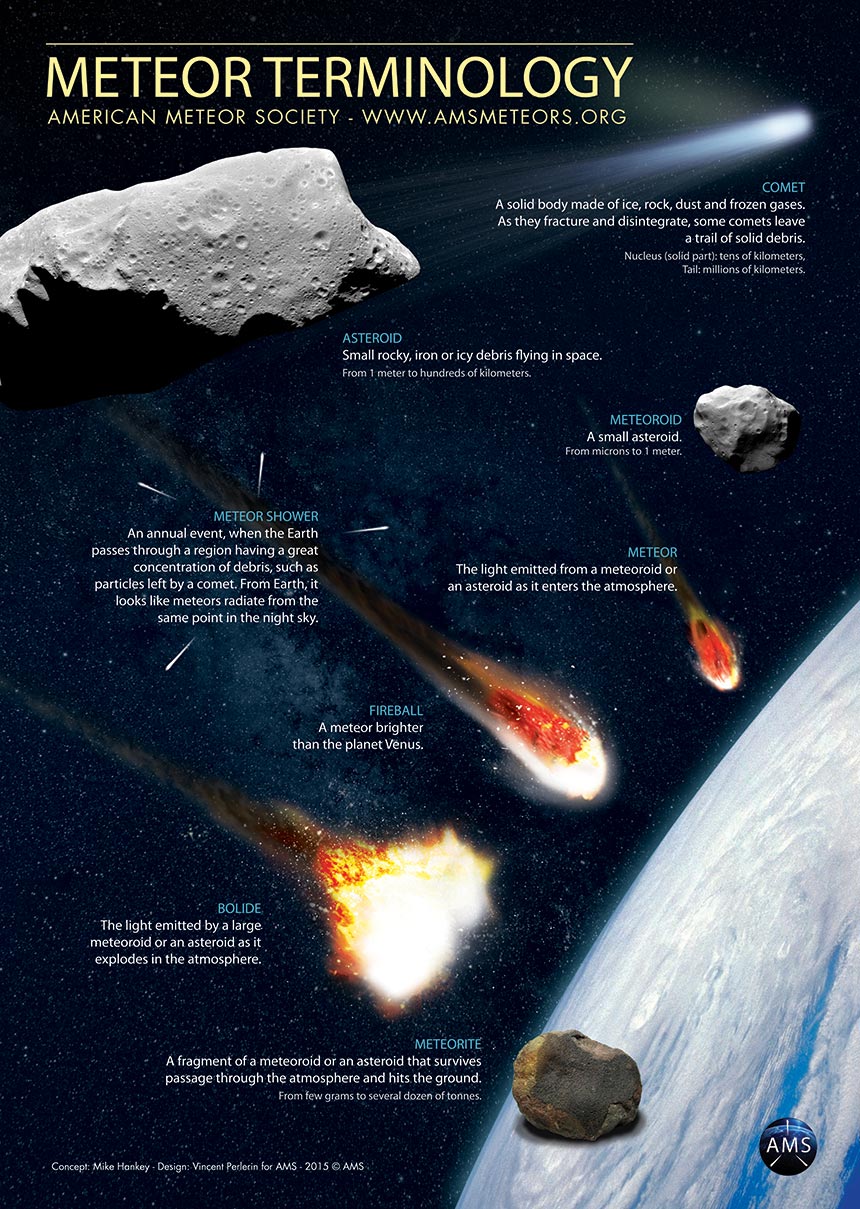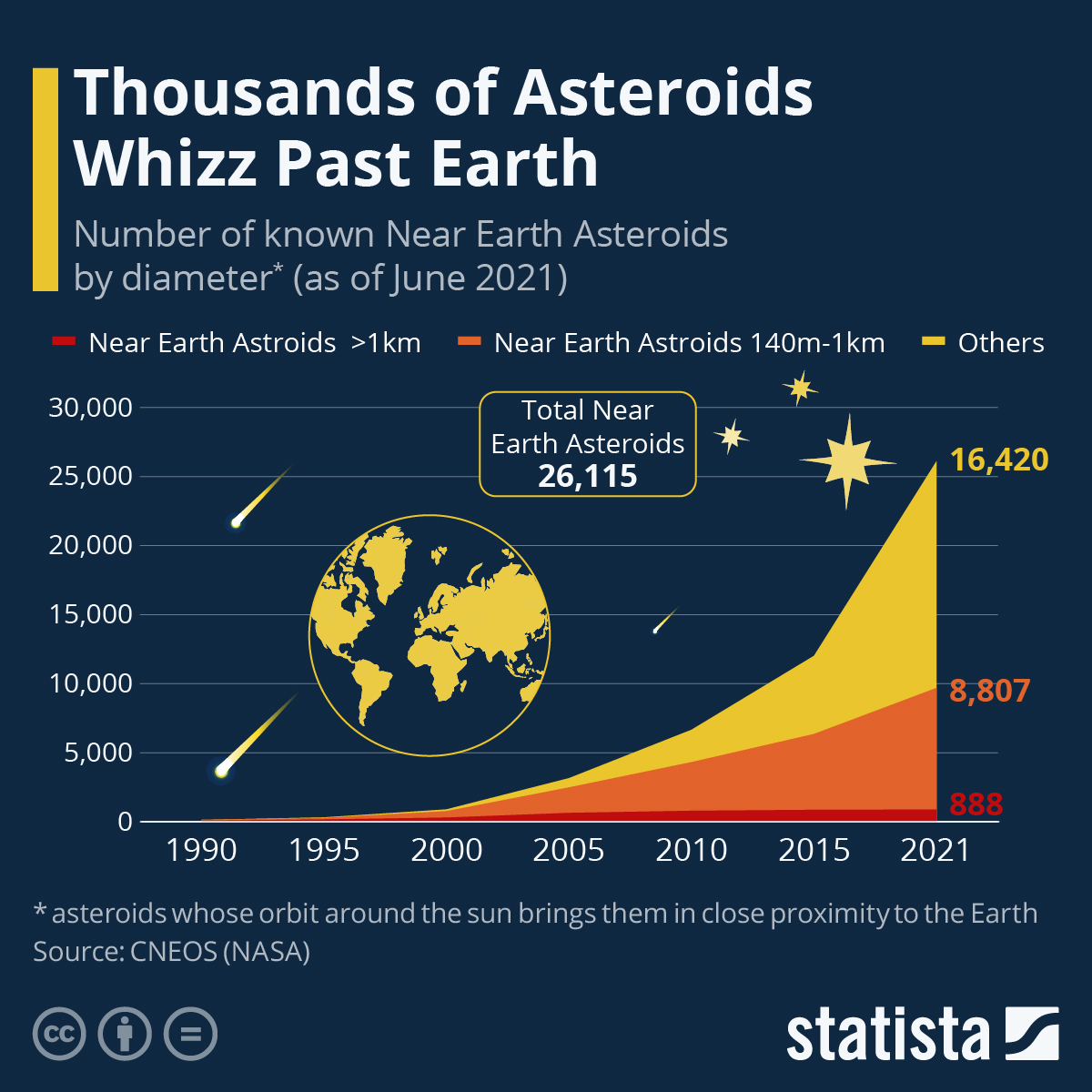Asteroid Day: Remembering how close they got to obliterating Earth

This undated handout two-picture combo of artist conceptions provided by NASA/JPL Caltech shows what NASA says are good candidates for a mission to capture an asteroid, haul it to the moon for astronauts to visit. One prime candidate swung close by Earth in 2011 so astronomers know its size, about 20 feet, mass and density, but they don’t really know what it looks like. These images are two different artist conceptions of what the lightweight asteroid could look like, either a pile of small rocks flying together in formation, left, or a larger porous rock with pebbles surrounding it, right. (AP Photo/NASA/JPL Caltech)
MANILA, Philippines—For many astronomy enthusiasts, June 30 is no ordinary day.
For millions of people across the globe, the last day of June marks the celebration of Asteroid Day—an international event recognized by United Nations to raise public awareness on asteroid hits on Earth.
The celebration of Asteroid Day offers a chance to learn more about asteroids and the history of the occasion.
Asteroid 101
What are asteroids?
According to the National Aeronautics and Space Administration (NASA), asteroids are small rocky objects that float in space and orbits the Sun.
Asteroids are also known as minor planets due to their size, which is smaller than actual planets in the solar system. Asteroids are usually irregularly shaped or nearly spherical and are sometimes filled with craters.
NASA also described it as the “airless remnants left over from the early formation of our solar system about 4.6 billion years ago.”
Vesta, the biggest asteroid and the second most largest object in the asteroid belt, was 530 kilometers in diameter. Some asteroids, on the other hand, can be 10 meters long.
“More than 150 asteroids are known to have a small companion moon (some have two moons). There are also binary (double) asteroids, in which two rocky bodies of roughly equal size orbit each other, as well as triple asteroid systems,” NASA said on its website.
What is the difference between asteroids and meteors?
Asteroids, while smaller than planets, are larger than the “pebble-sized” objects in space called the meteoroids.
As explained by NASA, when two asteroids smash into each other, small pieces break off. These are called meteoroids.
“If a meteoroid comes close enough to Earth and enters Earth’s atmosphere, it vaporizes and turns into a meteor: a streak of light in the sky,” said NASA.
The streaks of light are often called shooting stars, even though meteors are not actually stars.
What are the asteroid classifications?
Asteroids have three different classifications depending on where they are located.
- Main Asteroid Belt: According to NASA, at least 1.1 million to 1.9 million asteroids larger than one kilometer in diameter orbit within the asteroid belt between Mars and Jupiter.
- “Early in the history of the solar system, the gravity of newly formed Jupiter brought an end to the formation of planetary bodies in this region and caused the small bodies to collide with one another, fragmenting them into the asteroids we observe today,” said the agency.
- Trojans: These asteroids circle the orbit of a larger planet. Collision between the planet and the asteroid is avoided due to two special points in the orbit where “the gravitational pull from the Sun and the planet are balanced by a trojan’s tendency to otherwise fly out of orbit.”
- The Jupiter trojans are believed to be as numerous as the asteroids found in the asteroid belts. Other trojans include Mars, Neptune, and the Earth trojan which was discovered in 2011.
- Near Earth Asteroids: These asteroids orbit or pass near the Earth. Some asteroids, called the Earth-crossers, cross the Earth’s orbital path.
What are the most-known asteroids ever discovered?
Among the millions of asteroids in space, there are some that stand out for a reason. These include:
- Ceres was the first known asteroid discovered in January 1801. It is also the largest object in the asteroid belt. With a diameter of 939.4 kilometers, it makes up almost a third of the asteroid belt’s total mass, according to NASA.
- 243 Ida, which was discovered in September 1884, was the first to be discovered to have its own moon. It is also the second asteroid visited by a spacecraft.
- 2008 TC3 was the first near-Earth asteroid to be discovered before it fell to Earth. In 2008, the asteroid entered the planet’s atmosphere, causing what NASA described as a “fireball event.”
- 2010 TK7 was the first known Trojan asteroid that shares an orbit with the Earth. It was discovered in October 2010 by NASA’s Wide-field Infrared Survey Explorer (WISE) mission.
Destructive impacts
Near-Earth objects (NEOs), like asteroids and comets, that are greater than 140 meters in diameter and “whose orbit brings it within 4.7 million miles (7.5 million km) of Earth’s orbit” are flagged by NASA as potentially hazardous objects (PHOs).
“Although the vast majority of NEOs that enter Earth’s atmosphere disintegrate before reaching the surface (and more than 100 tons of dust particles disintegrate in Earth’s atmosphere daily), those NEOs that are larger than around 98 to 164 feet (30 to 50 meters) in size and could cause widespread damage in and around their impact sites,” NASA explained on its website.
Considered by the agency as a “cosmic wake-up call,” the Chelyabinsk event in 2013 was an example of how disastrous an asteroid impact could be.
In the morning of Feb. 15, 2013, residents of Chelyabinsk in Russia were awakened by what was described as “a blinding flash [and] loud sonic boom” as well as the shattering of glass in many households and facilities.
It all happened after an undetected asteroid as big as a house entered the Earth’s atmosphere and blew up 14 miles above the ground.
“The explosion released the energy equivalent of around 440,000 tons of TNT and generated a shock wave that blew out windows over 200 square miles and damaged some buildings,” NASA reported.
Aside from damages to infrastructure, over a thousand people in the city were injured in the blast, which according to reports, was mostly because of broken glass.
Years after the event, another asteroid exploded on Dec. 18, 2018 – this time over the Bering Sea.
A report by NASA’s Jet Propulsion Laboratory (JPL) said the blast that occurred about 26 kilometers above the sea unleashed around 173 kilotons of energy—considered as 10 times more powerful than the force of the atomic bomb dropped on Hiroshima during World War II.
‘Whizzing’ past the Earth
In 2004, asteroid 99942 Apophis was predicted to hit the Earth by 2068 and was thought of as the “most hazardous asteroid that could impact Earth.”
However, last March, astronomers announced that the Earth was finally safe and far from the potentially catastrophic asteroid impact.
READ: Earth is safe from ‘hazardous’ asteroid thought to hit in 2068 — NASA
Still, data from NASA’s Center for Near Earth Object Studies (CNEOS) revealed that over a thousand asteroids have passed near Earth over the past years.
Analysis by data consumer Statista said there were a total of 26,115 Near Earth Asteroids (NEAs) and around 2,185 potentially dangerous asteroids detected as of June this year.
READ: Thousands of Asteroids Whizz Past Earth
The figures, according to the report by Statista’s Katharina Buchholz, were significantly greater than earlier data collected by NASA.
“As technology has advanced throughout the decades, people have become better at seeing what is floating around us in the sky,” said Buchholz.
“According to Nasa’s CNEOS Center, only a handful of celestial objects had been detected by 1900. The scale of that number did not change much until the end of the century. As of 1990, only 134 Near Earth Asteroids and 42 potentially dangerous objects were detected up above,” she said.
Story behind the annual celebration
In 2016, the UN and the Association of Space Explorers (ASE) declared that International Asteroid Day should be observed annually on the 30th of June as a commemoration of the Tunguska event when an asteroid slammed into Earth near the Podkamennaya Tunguska River in Russia in the morning of June 30, 1908.
The blast was so strong that the shock wave was felt 40 miles from ground zero.
“A century later some still debate the cause and come up with different scenarios that could have caused the explosion,” Don Yeomans, former manager of the NEO Office at NASA JPL, said in a 2008 article
“But the generally agreed upon theory is that on the morning of June 30, 1908, a large space rock, about 120 feet across, entered the atmosphere of Siberia and then detonated in the sky,” he explained.
Aside from raising public awareness on the potential hazard of asteroid impacts, the UN also urged member states to pay more attention to such events.
“It is essential that states pay more attention to the problem of collisions of space objects, especially those with nuclear power sources, with space debris, and other aspects of space debris,” a UN resolution read.
It said there’s a need to continue research on asteroids to develop technology to monitor space debris, compile and disseminate data on these.
Filipino namesakes
There are currently 13 asteroids named after Filipinos orbiting in space.
According to the Philippine Atmospheric, Geophysical and Astronomical Services Administration (Pagasa), among these were:
- 6282 Edwelda: A combination of the names of the couple Edwin and Imelda Joson who have made a notable contribution in Philippine astronomy.
- 11697 Estrella: The asteroid was named after Allan Noriel Estrella who won the Intel International Science and Engineering Fair (ISEF) in 2002 as a Manila Science High School student.
- 12088 Macalintal: Named after Jeric Valles Macalintal, Estrella’s groupmate in the 2002 ISEF competition.
- 12522 Rara: Named after Prem Vilas Fortran Rara of Mindanao State University-Iligan Institute of Technology, who competed against Estrella and Macalintall, also got his own asteroid.
- 13241 Biyo: Named after a science teacher of the Philippine Science High School, Dr. Josette Biyo, who was also the first Asian to receive the Intel Excellence in Teaching Award in 2002. She’s currently the Director of Science Education Institute (SEI-DOST).
- 4866 Badillo: An asteroid named in honor of Fr. Victor Badillo SJ, who co-founded the Philippine Astronomical Society.
- 6636 Kintanar: Named after Dr. Roman Kintanar, former director of Pagasa and former president of the World Meteorological Organization.
- 28439 Miguelreyes: Named after Miguel Arnold Reyes, who finished second in the 2011 Intel ISEF under the category of Materials and Bioengineering.
- 30100 Christophergo: Named after Cebu astronomer and avid astrophotographer Christopher Go for his contribution to Astrophotography. He likewise discovered the second red spot of Jupiter also called Red Oval BA or “Red Spot Jr” in 2006.
- 34044 Obafial: Named after Nadine Antonette Obafial, one of the three students of Davao City National High School who ranked second during the 2017 Intel ISEF.
- 34047 Gloria: Named after Rubeliene Chezka Gloria, one of the three students who competed in 2007 Intel ISEF and won second prize.
- 34049 Myrelleangela: Named after Myrelle Angela Colas who also participated in the competition alongside Obafial and Gloria.
- 34053 Carlquines: Named after Carl Joshua Quines of Valenzuela City School of Mathematics and Science. Quines took home the second prize in the 2017 Intel ISEF for his work on graph theory in Mathematics.
In 2019, three more Filipino high school students who won major awards during the 2018 Intel International Science and Engineering Fair (ISEF) were set to have three minor planets named after them.
READ: 3 minor planets named after 3 Filipino students who won in 2018 ISEF
TSB
RELATED STORY:
It’s out of this world—AI confirms existence of fifty new planets




